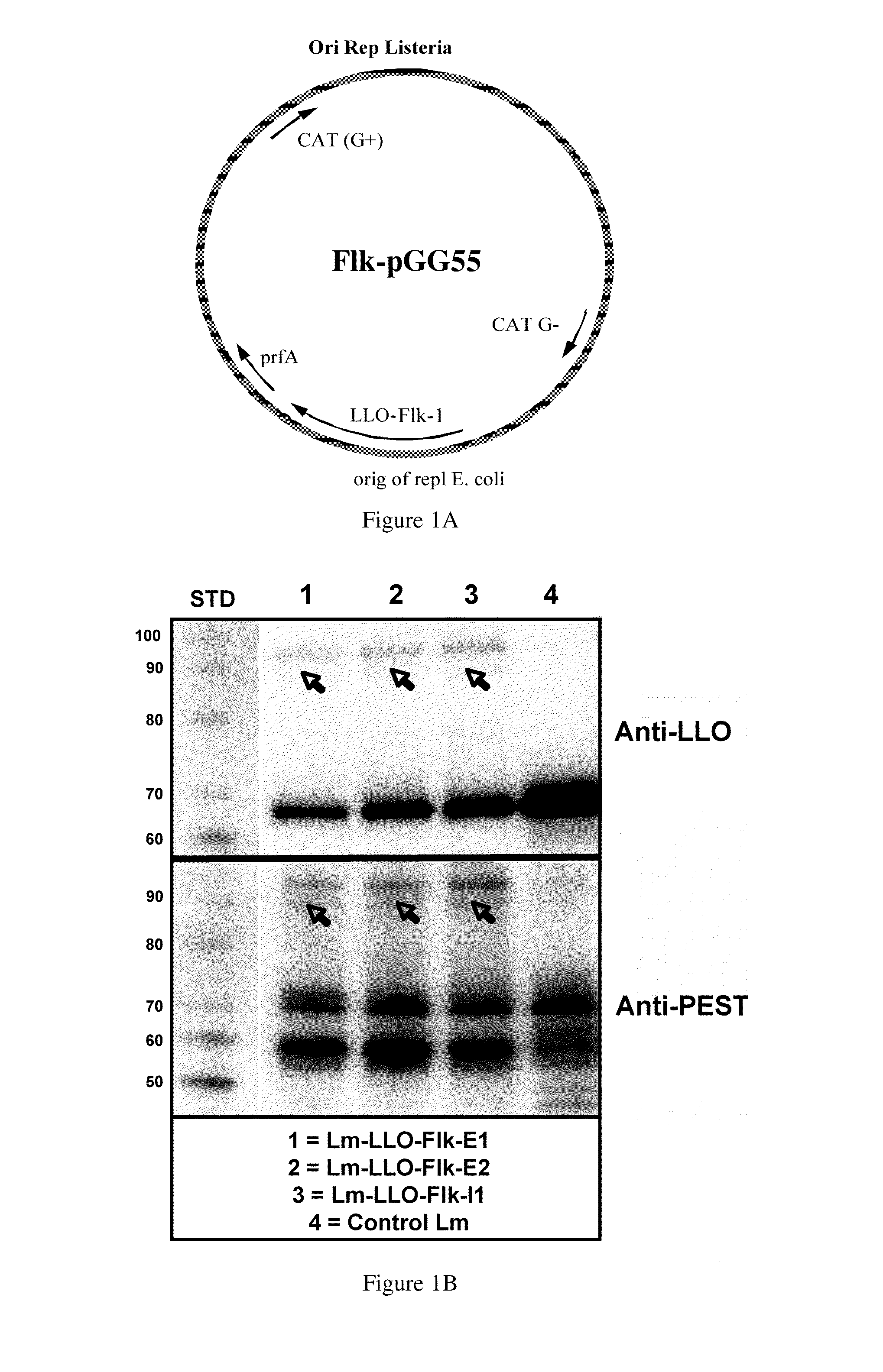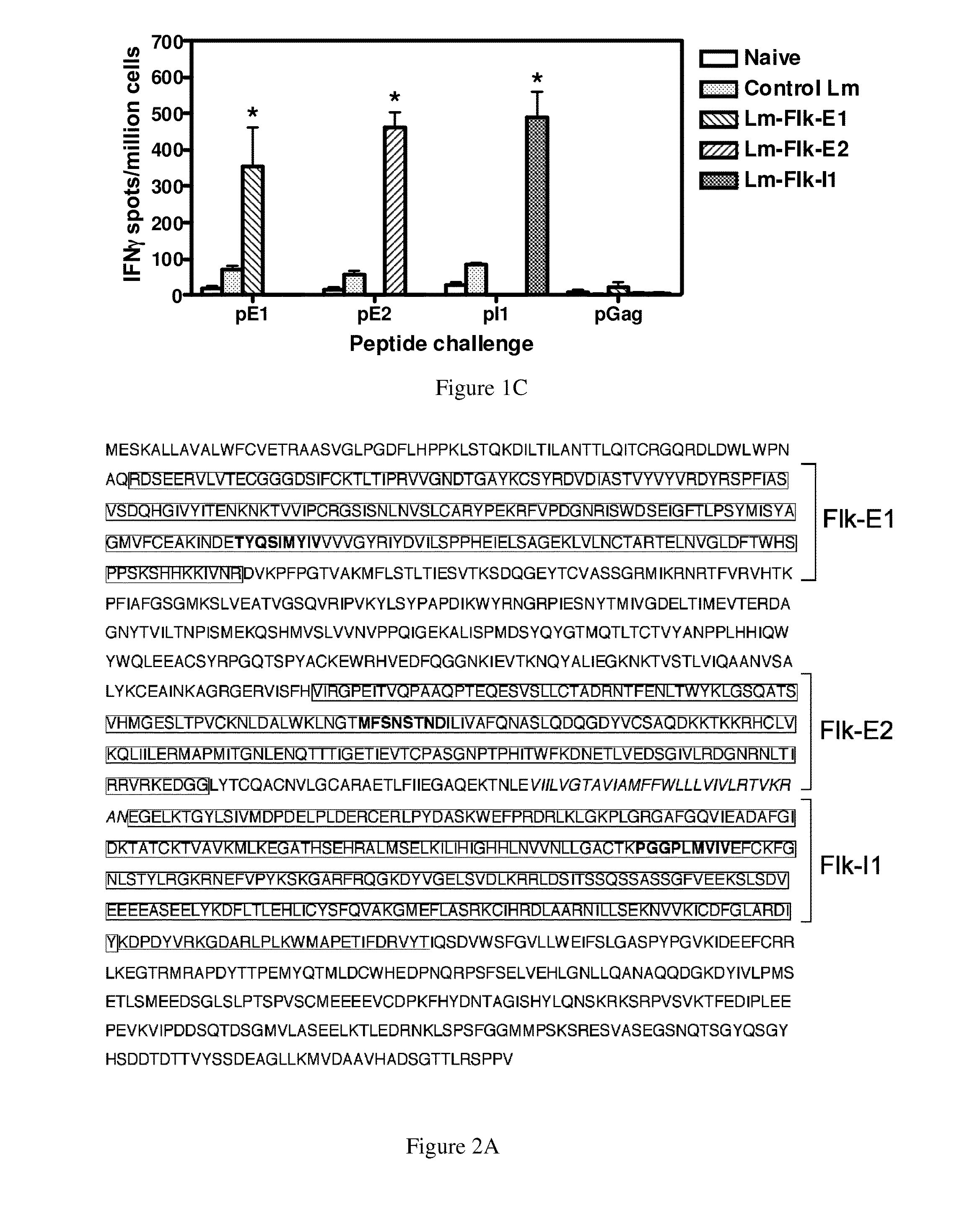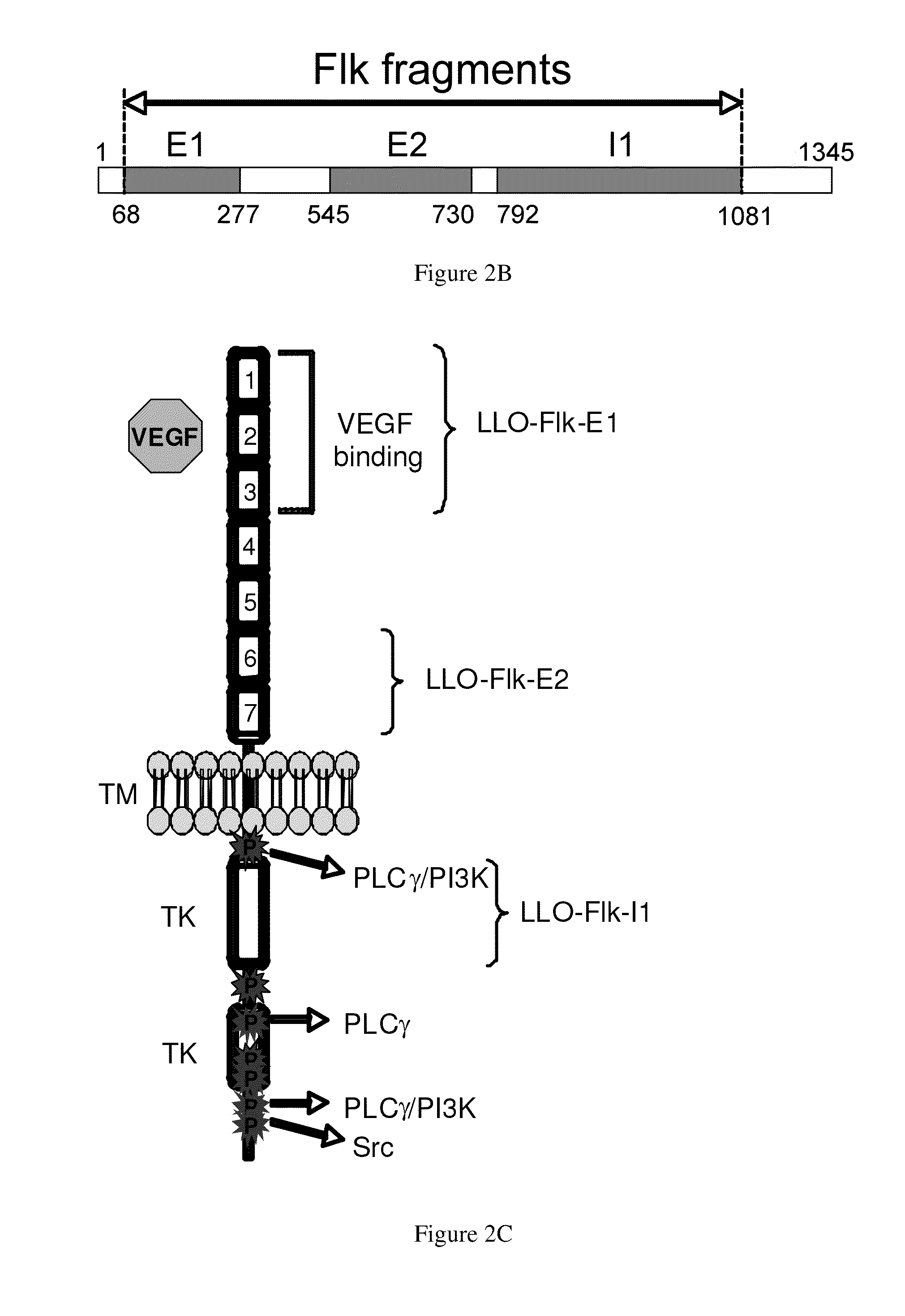Compositions comprising angiogenic factors and methods of use thereof
a technology of angiogenic factors and compositions, which is applied in the field of recombinant listeria strains comprising an angiogenic factor, can solve problems such as toxic side effects, and achieve the effect of preventing the recurrence of tumors
- Summary
- Abstract
- Description
- Claims
- Application Information
AI Technical Summary
Benefits of technology
Problems solved by technology
Method used
Image
Examples
example 1
Construction of LLO-Flk-1 Constructs
[0303]A total of three constructs were tested, each containing a different region of Flk-1: E1 (AA 68-277), E2 (AA 545-730) and I1 (792-1081) (FIG. 1A). Regions were selected based on predicted epitopes. Since we were interested in testing these vaccines in the FVB / N-based breast cancer model, we decided to clone fragments that would be most appropriate for the model haplotype used for testing (i.e., FVB / N, H2q). The E1, E2 and I1 domains selected contained several potential epitopes for the H-2q mouse MHC I haplotype (FIG. 2A).
[0304]Each fragment was cloned as a fusion protein with the truncated LLO protein (FIG. 1A). To test whether the LLO-Flk-1 fusion proteins were produced and secreted by the Lm-LLO-Flk-1 constructs, we analyzed protein from culture supernatants by Western-Blot (Figure. 1B) using a polyclonal anti-PEST antibody (FIG. 1B bottom) or anti-LLO antibody (FIG. 1B top). A band for each fusion construct was detected, LLO-Flk-E1 (˜81 ...
example 2
Therapeutic Efficacy of LM-LLO-Flk-1 Vaccines in a HER-2 / NEU-Expressing Tumor Model
[0305]To test the ability of our vaccines to induce the regression of Her-2 / neu+ breast tumors, we used the NT-2 tumor model, which overexpresses the rat Her-2 / neu as a transgene and was originally derived from a spontaneous mammary tumor in the FVB / N Her-2 / neu transgenic mouse. The NT-2 cell line does not express the nk-1 molecule, and thus our antigen of interest is only located on the host vasculature. Cells were grown in vitro and transplanted subcutaneously into the flank of FVB / N mice. On day 4, when palpable (˜4-5 mm in diameter) tumors had formed, mice were vaccinated and then boosted weekly for a total of three vaccinations. Vaccines Flk-E1 and Flk-I1 were able to induce regression, and in some mice complete eradication (Flk-E1: 2 / 8; Flk-I1: 2 / 8) of transplanted tumors by day 64 post-inoculation (FIG. 3A). However, Flk-E2 was unable to control tumor growth, which was similar to the group trea...
example 3
Anti-Angiogenesis Induced Tumor Regression is Dependent on Epitope Spreading to an Endogenous Tumor Antigen
[0307]The presence of Her-2 / neu epitope spreading suggested that tumor regression may not solely depend on anti-vascular events, but also on the immune response to the tumor antigen HER-2 / neu. To test this hypothesis we repeated the same experiment using the two most potent vaccines, Flk-E1 and Flk-I1 but, in addition to inoculation of wild-type FVB / N mice, we also injected the NT-2 cells subcutaneously into its syngeneic progenitor strain, FVB / N Her-2 / neu transgenic, which exhibits profound tolerance to the rat Her-2 / neu molecule. Again, Flk-E1 and Flk-I1 slowed the growth of the NT-2 tumors in wild type FVB / N mice, as previously demonstrated (FIG. 5A, left panel). However, in the transgenic host where anti-HER-2 / neu responses are limited by tolerance, we observed outgrowth of all tumors (FIG. 5A, right panel). Both these results reflected the epitope spreading observed toward...
PUM
 Login to View More
Login to View More Abstract
Description
Claims
Application Information
 Login to View More
Login to View More - R&D
- Intellectual Property
- Life Sciences
- Materials
- Tech Scout
- Unparalleled Data Quality
- Higher Quality Content
- 60% Fewer Hallucinations
Browse by: Latest US Patents, China's latest patents, Technical Efficacy Thesaurus, Application Domain, Technology Topic, Popular Technical Reports.
© 2025 PatSnap. All rights reserved.Legal|Privacy policy|Modern Slavery Act Transparency Statement|Sitemap|About US| Contact US: help@patsnap.com



